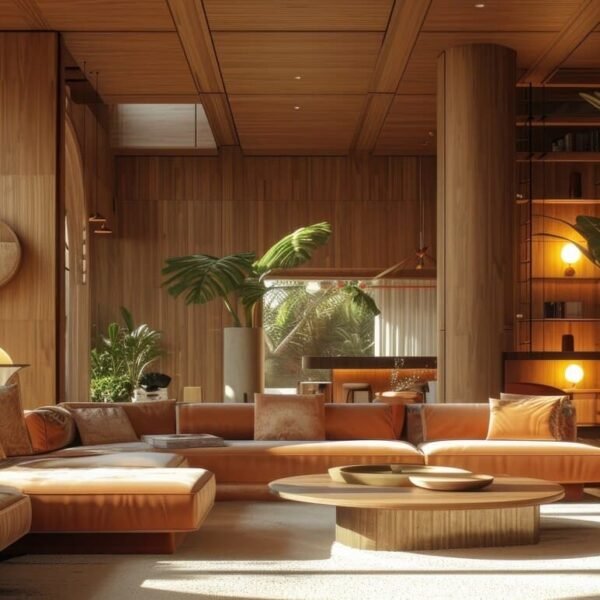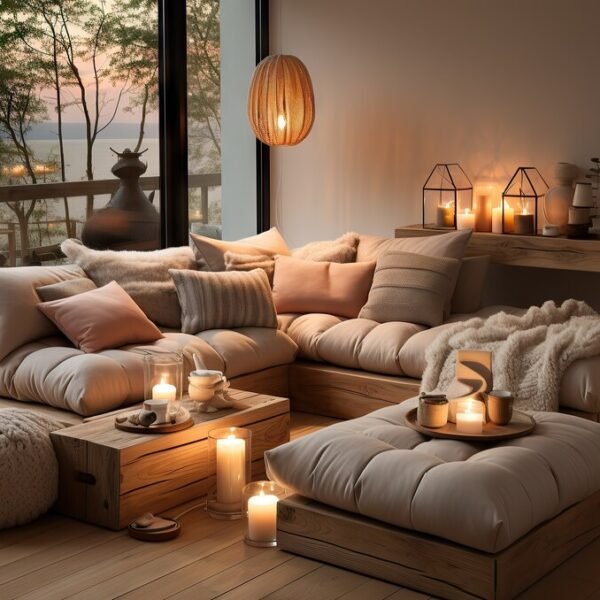How Good Interior Design Improves Your Mood
Interior design isn’t just about making spaces look beautiful; it’s also about creating environments that support our well-being and happiness. The spaces we inhabit can significantly influence our emotions and overall mental health. This blog explores how thoughtful and well-executed interior design can enhance your mood and create a more positive living experience.
The Power of Color
Color has a profound psychological impact on our emotions. Different colors can evoke different feelings and moods. For example, blue is often associated with calmness and serenity, making it an excellent choice for bedrooms or spaces meant for relaxation. Yellow, on the other hand, is associated with happiness and energy, making it a great option for kitchens or workspaces.
Using the right color palette in your interior design can help create the desired emotional response. Soft, neutral colors can create a peaceful and calming atmosphere, while vibrant, bold colors can energize a space and promote creativity. It’s essential to consider the emotional impact of colors when designing a space to ensure it aligns with the intended purpose and mood.
Natural Light and Its Benefits

Natural light is another crucial element in interior design that can significantly affect your mood. Exposure to natural light boosts serotonin levels, which can improve mood and overall well-being. A well-designed space should maximize natural light, whether through large windows, skylights, or strategically placed mirrors to reflect light.
Incorporating natural light into your home can help regulate your circadian rhythm, improve sleep quality, and reduce symptoms of depression. In spaces where natural light is limited, using light fixtures that mimic daylight can provide similar benefits and enhance the overall ambiance.
The Role of Furniture and Layout
The layout and choice of furniture can also impact your mood and mental state. A cluttered or chaotic space can lead to feelings of stress and anxiety, while a well-organized and thoughtfully arranged space can promote a sense of calm and order. Minimalist designs, with clean lines and ample storage, can help create a serene environment.
Comfortable and functional furniture also plays a crucial role in mood enhancement. Investing in ergonomic chairs, cozy sofas, and supportive beds can improve physical comfort, which in turn positively affects your mental well-being. The arrangement of furniture should encourage easy movement and flow, avoiding overcrowding and ensuring that the space feels open and inviting.
Incorporating Nature
Bringing elements of nature into your interior design, known as biophilic design, has been shown to reduce stress and improve mood. Houseplants, natural materials like wood and stone, and water features can create a calming and grounding atmosphere. Plants, in particular, not only add aesthetic appeal but also improve air quality, which can have a positive impact on health and well-being.
The biophilic design taps into our innate connection to nature, providing a sense of tranquility and relaxation. Even simple touches like using natural textures or landscape art can evoke a sense of the outdoors and create a soothing environment.
Personalization and Emotional Connection
Personalizing your space with items that have emotional significance can greatly enhance your mood. Family photos, travel souvenirs, artwork, or heirlooms can evoke positive memories and feelings of happiness. These personal touches make a space feel uniquely yours and can provide comfort and joy.
A home that reflects your personality and values can foster a sense of belonging and emotional well-being. Whether it’s through a favorite color scheme, cherished items, or a specific style, personalizing your space can make it a true sanctuary that supports your mental health.
The Importance of Scent and Sound
While often overlooked, scent and sound are powerful elements in interior design that can influence mood. Aromatherapy, through the use of essential oils or scented candles, can create a calming or invigorating atmosphere. For example, lavender is known for its relaxing properties, while citrus scents can be uplifting and energizing.
Similarly, sound can have a significant impact on mood. Incorporating elements like water features, which provide soothing background sounds, or a sound system for playing your favorite music can enhance the atmosphere of a space. Ensuring that your environment has good acoustics and minimal noise pollution can also contribute to a more peaceful and pleasant experience.
Creating Zones for Different Moods

A well-designed home often includes different zones or areas tailored to specific activities and moods. For example, a cozy reading nook with soft lighting and comfortable seating can provide a retreat for relaxation and quiet contemplation. In contrast, a bright and airy kitchen or dining area can be designed to encourage social interaction and energy.
Designing these zones with intention can help you transition between different activities and emotional states throughout the day. It allows for a more balanced and fulfilling experience, ensuring that your home supports various aspects of your life and well-being.
If you plan to build your home or office, Contact Us
Conclusion
Good interior design goes beyond aesthetics; it’s a powerful tool for enhancing your mood and overall quality of life. By carefully considering elements such as color, natural light, furniture layout, nature, personalization, scent, sound, and zoning, you can create a space that not only looks beautiful but also supports your mental and emotional well-being.
Investing in thoughtful interior design is an investment in your happiness and health. A well-designed home can be a sanctuary that nurtures your soul and provides comfort and joy. Whether you’re redesigning a single room or an entire home, remember that the choices you make in your environment profoundly impact your mood and well-being.


